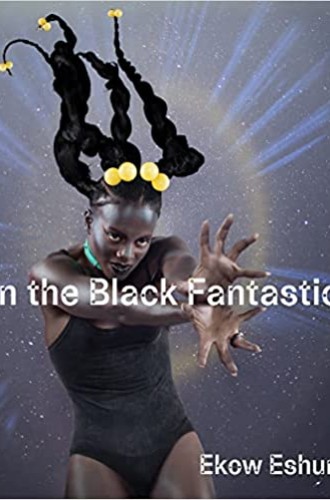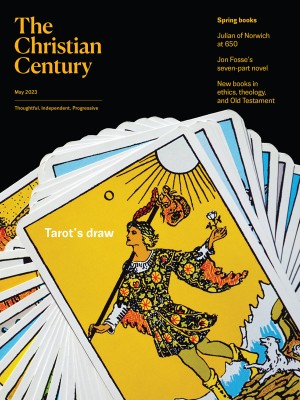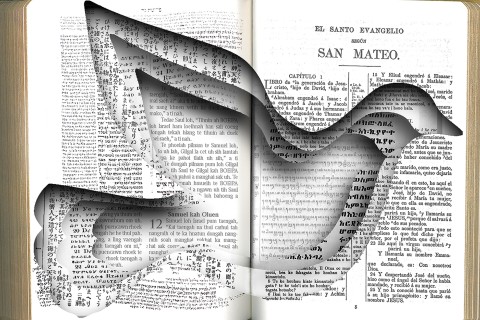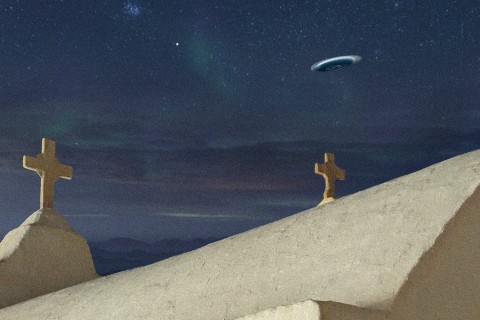Ekow Eshun’s journey into Black artistic consciousness
The writer and curator expounds on his celebrated exhibition’s thesis: that reimagining Black space and time with the fantastical invites a new way of being in the world.
As a self-professed daydreamer who is deeply invested in Afrofuturism, sci-fi, the arts, and Black spiritualities, I commend In the Black Fantastic as an essential read. In it, Ekow Eshun invites the reader to embark on a journey exploring Black artistic consciousness. Coming in at just over 300 pages with stunning art images throughout, this bound volume captures the essence of Eshun’s celebrated exhibition of the same title from last summer.
The book is made up of works by artists of the African diaspora that interrogate norms and subvert Western White dichotomies of real/unreal, scientific/unscientific, and natural/supernatural to uncover racial injustice. Rather than attempting to recapitulate the exhibition, In the Black Fantastic stands alone as a form of critical scholarship that expounds on the exhibition’s thesis: that reimagining Black space and time with the fantastical invites a new way of being in the world, one that upends the myths that fuel anti-Black violence.
Read our latest issue or browse back issues.
What exactly is “the Black fantastic”? you might ask. Is it a genre, a form of critical theory, a political stance, or something altogether different? Eshun addresses this question in the introduction, setting the stage for the essays and images that follow. The Black fantastic, he explains, is a way of seeing that draws from history, myth, and African spiritualities to conjure new visions of African diasporic culture and identity. While magical realism and Afrofuturism can fall into tropes, the Black fantastic builds upon the necessary work of those genres to present a liberatory way of constructing the world anew.
In “Black Feminist Voodoo Aesthetics, Conjure Feminism, and the Arts,” one of the book’s standout essays, cultural studies scholar Kameelah Martin draws a strong connection between the secular and spiritual—despite the typical Western dichotomy between the two. The two realms not only speak to each other, says Martin, but are unified in the work of the Black femmes of the diaspora, such as Toni Morrison’s Beloved, the film Eve’s Bayou, and Beyoncé’s Black Is King. By sharing the ways in which the secular and the spiritual intersect within African religious traditions and are inflected in Black Atlantic communities, Martin’s essay celebrates the specificity of Black femme creative practice and its distinct cultural references while also bringing about a rooted Black feminist consciousness.
This is a perspective that I try to adopt in my daily work at an art museum: that we are not simply working on the surface level of things in the arts; rather, we are trying to manifest and bring about a world of greater consciousness. As I work to build cocurricular exhibition programs and create an inclusive and equitable environment for the museum’s interns, I bring this “conjure feminism” to my practice. That is to say, I acknowledge that the work involves creative care. And so I incorporate elements of intentional breathing, prayer, invocation, and benediction as a way to hold space for the museum community—whether these spiritual moments are legible as such or not.
Other essays in the book address the technological and spatial lenses through which the Black fantastic is inflected, uplifting a diverse chorus of voices and expertise. The reader’s journey through the text is marked in free-form and ritualistic ways: signposts name three distinct sections as “Invocation,” “Migration,” and “Liberation.” Yet common themes weave throughout, placing works of art in conversation with one another.
One conversation I find particularly fruitful is between an Allison Janae Hamilton photograph and a still from Jordan Peele’s 2017 film Get Out. Floridawater II is a photograph of Hamilton floating, torso to legs visible, in the Wacissa River. The light shines on her white-clothed body as she kicks her leg forward, creating some momentum in this murky and historied river. Just below the photograph, we see a close-up shot of Get Out protagonist Chris Washington, eyes and mouth wide open, with tears streaming down his face as he enters a sunken place.
Though we can easily recognize in these two works the trauma of chattel slavery and anti-Black violence, might we also conjure up different references, such as the healing quality of tears, submersion baptism, and the use of Florida water in hoodoo cleansing rituals? Could all of these complexities—in horror and speculative fantasy—exist at once? The open questions posed by these two works offer a possibility: that rather than try to escape the past we might go back to it so we might heal, correct, and move forward in greater wholeness.
That’s what Eshun offers us throughout this edited collection: a way of seeing that restores wholeness against what is perceived as a fragmented and broken African diaspora by those on the periphery of Black discourse. Along with being visually and conceptually compelling, this collection of essays and artworks is deeply rooted in Black consciousness, memory, and ways of knowing. Its free-form nature invites multidimensional and nonlinear reading—around in circles, taking different pathways and journeys across the art and text, repeated over the course of several months.
It is not often the case that an exhibition catalog is able to transport the reader into the mind of a curator and the ethos of a show. Eshun has achieved something elusive: the ability to world his audience, long after the exhibition itself has closed.







